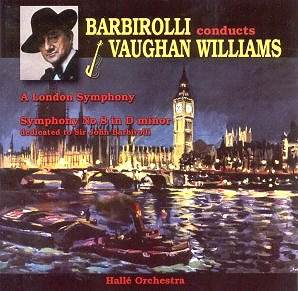 Composer: Ralph Vaughan Williams
Composer: Ralph Vaughan Williams
Works: Symphony No. 2 A London Symphony (1913 rev 1920), Symphony No. 8 (1956)
Performers: Hallé Orchestra/Sir John Barbirolli
Recording: Free Trade Hall, Manchester, 19 June 1956 (No. 2), 28-29 Dec 1957 (No. 8) stereo ADD
Label: Dutton Laboratories – The Barbirolli Society CDSJB 1021 [73.33]
Ralph Vaughan Williams’s symphonic oeuvre encapsulates the very essence of the English landscape and spirit, and his second and eighth symphonies offer contrasting yet complementary insights into his artistic evolution. The former, known as “A London Symphony,” stands as a vibrant portrait of early 20th-century urban life, while the latter embodies a more introspective and poignant reflection penned in the twilight of his life. This recording, featuring Sir John Barbirolli and the Hallé Orchestra, breathes new life into these works, showcasing the conductor’s unrestrained passion and dramatic vision, qualities that resonate deeply within these symphonic landscapes.
Barbirolli’s interpretation of Symphony No. 2 is marked by a vigorous energy that sets it apart from the more measured readings traditionally associated with conductors like Sir Adrian Boult. The Lento – Allegro Molto movement is a vibrant highlight, where the conductor’s ability to manipulate tempo creates an exhilarating tension. At precisely 7:03, Barbirolli’s pursuit of tempo becomes a palpable force, propelling the orchestra forward with a fervor that elucidates the movement’s emotional undercurrents. The premonitory hints of the “Dona Nobis” theme at 8:53 further underscore Vaughan Williams’s foreshadowing of themes that echo throughout his work. The ensemble’s string section, while occasionally revealing a hollow tone in climactic passages, manages to convey a rich tapestry of sound that is particularly striking in Barbirolli’s hands.
The Symphony No. 8, composed later in Vaughan Williams’s life, finds Barbirolli infusing the score with a profound expressiveness that is both intimate and expansive. The historical context of this symphony, written for Barbirolli himself, adds an intriguing layer to the interpretation. The performance captures the rawness and richness of the analogue tape, which, despite its age, retains an impressive clarity that vividly showcases the orchestra’s tonal colors. The Scherzo emerges as a revelation, with woodwind lines that evoke an unexpected Shostakovichian stridency at 1:10, an indicator of Vaughan Williams’s engagement with contemporary musical dialogues.
The recording quality itself merits attention; the restoration by Michael J. Dutton brings out the warmth and depth of the original Pye tape, while also confronting its limitations. The close-up sound engineering creates a sense of intimacy but can occasionally veer into an overly spotlit approach, risking a loss of the orchestral blend. Yet, the balance achieved allows the listener to appreciate individual instrumental colors and the overall cohesion of the ensemble, which is particularly crucial in the intricate textures of both symphonies.
This release is further distinguished by its accompanying discography and insightful notes from Michael Kennedy, which provide valuable context for the listener. The thoughtful decision to allow a generous gap between the epilogue of No. 2 and the commencement of No. 8 serves not only as a practical consideration but also as an artistic one, reflecting a sensitivity to the narrative flow of the recordings.
The performances captured here are not merely archival; they are vibrant and deeply felt interpretations that reaffirm Vaughan Williams’s capacity for emotional depth and complexity. Barbirolli’s conducting serves as a reminder that Vaughan Williams’s music is anything but passion-neutral. This release is essential for those who wish to explore the emotional and musical richness of these symphonies, standing as a testament to the enduring power of Vaughan Williams’s voice in the orchestral canon.



